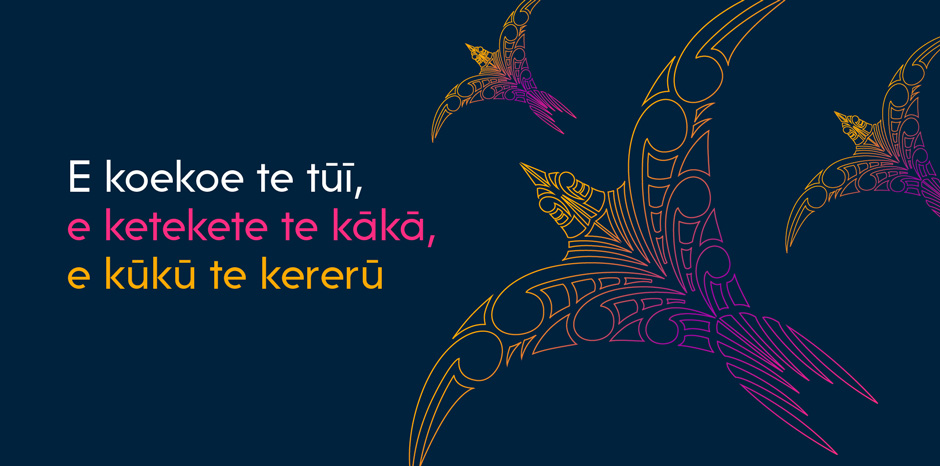
Let’s be honest. Advertising can be a bit… much. Buzzwords. Jargon. Decks thicker than a parliamentary report. There’s a whole lot of noise in our industry — and most of it’s not helping anyone.
Make your message make sense
At Hemisphere, we believe the job of a Creative isn’t to add more fluff, but to dig through it. To find the core of an idea. Strip it back. Sharpen it. And make something people actually care about.
I call it cutting the crap to get to the gold.
Now, that might not sound especially elegant — but we’re not really in the business of elegance. We’re in the business of clarity, connection, and occasionally a good laugh (especially if it helps make a message stick).
As a Tiriti-dynamic agency, we always look to a te ao Māori context to help our thinking. And perhaps a nicer way to explain our approach is ‘He maurea kai whiria!’. This can be translated as ‘don’t get bogged down in the small things, focus on what’s important!’
Simpler is smarter
We’ve found that the more complex a message seems, the more important it is to simplify it. Commercial companies, government departments, non-profits, councils — all have incredibly valuable things to say. But often those things can come layered in policy-speak or internal shorthand that makes sense in a meeting room but has little chance of surviving out in the wild.
Our job is to decode. To play translator. We take the 40-page report and ask, “What’s the one sentence that really matters?” We take the 9-point strategic comms plan and say, “Alright, but what are we actually trying to get someone to think, feel, or do?”
We’re not being flippant. It takes serious strategic thinking and creative discipline to distil complexity into something simple and smart. But when you do it right, you don’t just make a clearer message — you make a stronger one.
Creativity is a team sport
At Hemisphere, we’re not big on creative silos.
No tortured geniuses in black turtlenecks (although we do let Te Maia wear his on Tuesdays). We believe the best ideas come from collaboration — bouncing thoughts around the room, challenging each other, building on half-baked notions until they become something brilliant.
There’s a reason we have this whakataukī framed on our office wall:

The tui chatters, the parrot gabbles, the wood pigeon coos.
Everyone brings a different lens, has a different voice. And we like it that way. It means the end result has depth, heart and, importantly, it works
It also means we’re quick to kill off ideas that don’t fly. There’s no ego about it. Not every idea deserves airtime. As I often say to Kris, “there’s no such thing as a bad idea, unless it’s a bad idea”. The faster we can bin the weak ones, the faster we can get to the gold.
We really do live and breathe Ambidextrous Thinking. Every day. In every way.
The brief is just the start
Sometimes clients come to us with a well-structured brief. Other times, the brief is more of a vibe. Either way, we dig in. We ask questions. Probably more than you’d like.
But we’re not trying to be difficult — we’re just trying to find the angle that will make a message land. That might mean reframing the problem entirely.
We’ve had briefs where we’ve said: “You know what? This isn’t actually about behaviour change — it’s about trust.” Or: “This isn’t a digital issue — it’s a community issue.” That shift in thinking can completely change the direction of a campaign. It’s where strategy and creativity meet, and it’s where we start to find those moments of clarity that turn into campaigns people notice — and remember.
(Oh, and if you’ve been thinking of how to improve your briefs, just ask us and we’ll send you a template we’ve put together.)
Emotion beats information (most of the time)
Here’s something we’ve learned from years in the game: facts are fine, but feelings stick. You can hit someone with ten bullet points, or you can give them one simple, emotive story that brings it all to life. Guess which one they’ll remember?
That doesn’t mean dumbing things down. It means elevating the message. Making it human. We aim for work that makes people feel something — surprise, curiosity, recognition, even a chuckle. Because when people feel something, they engage. And when they engage, they act.
Trust the process
If you work with us, here’s what you can expect: a lot of questions, a lot of coffee, a bit of colourful language, and a team that’s relentless about getting it right.
We’re not interested in ticking boxes or churning out cookie-cutter creative. We care about impact — the kind you can see in campaign results and public response.
Our creative process is deliberately messy to begin with — because that’s how we find the gold. The good stuff doesn’t usually arrive fully formed. It shows up as a half-thought, a scribble, or a “what if?” hurriedly typed into the Notes app on our iPhone.
It won’t always be a straight line. Sometimes the best idea comes on a third iteration. Sometimes on the fifteenth. And without tooting our horn too much, we have been known to also hit a few hole-in-ones. But however long it takes, we’ll get there, we’ll get it right, and we’ll bring you with us every step of the way.
Wrapping it up (without the ribbons)
So, if you’re tired of convoluted campaigns, vague promises, and creative work that sounds like it was written by a committee of lawyers — we get it. So are we.
Let’s cut the crap. Let’s find the gold.
At Hemisphere, that’s what we’re here to do. And we’d love to do it with you.